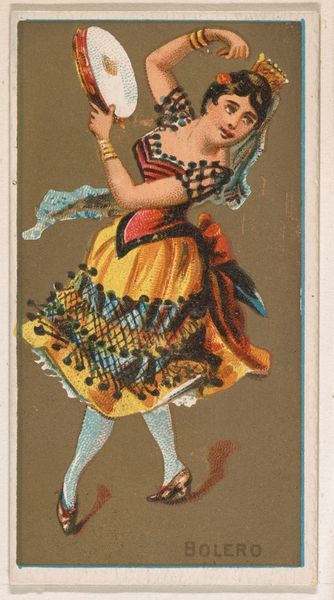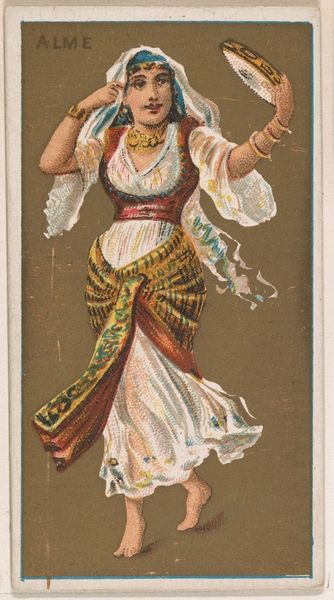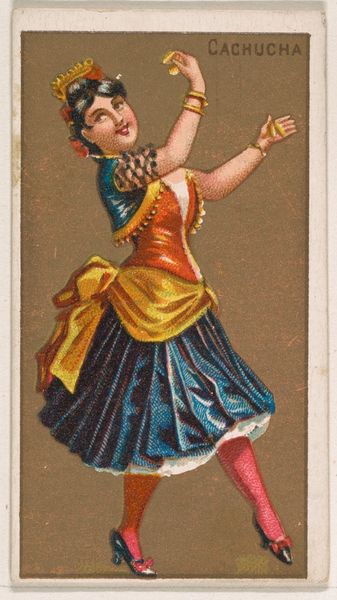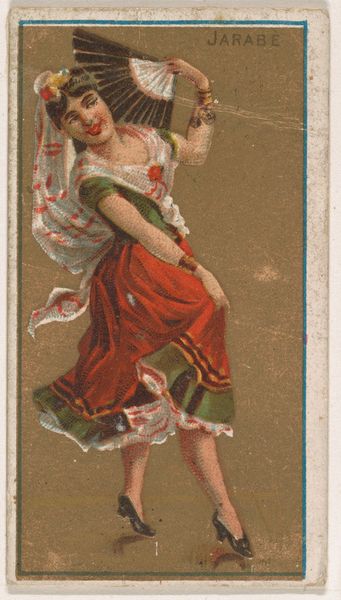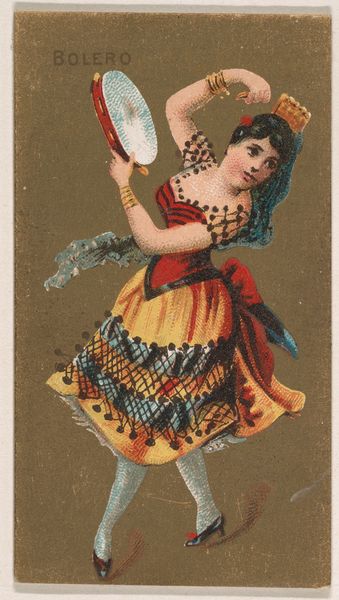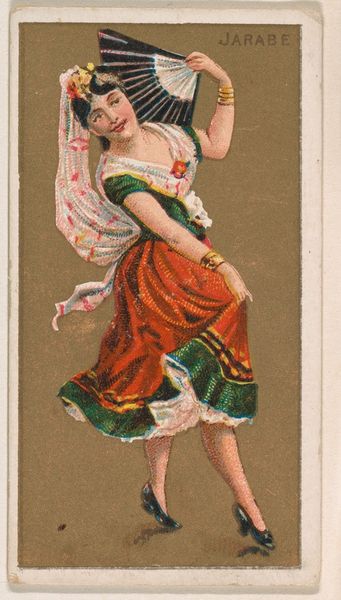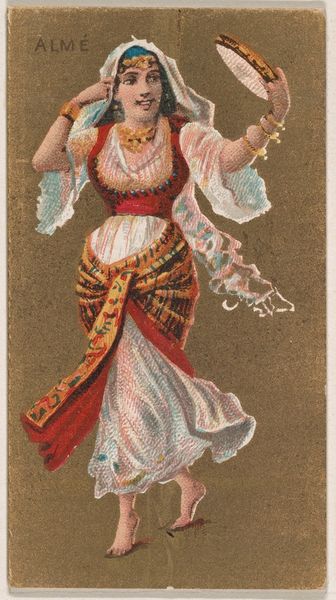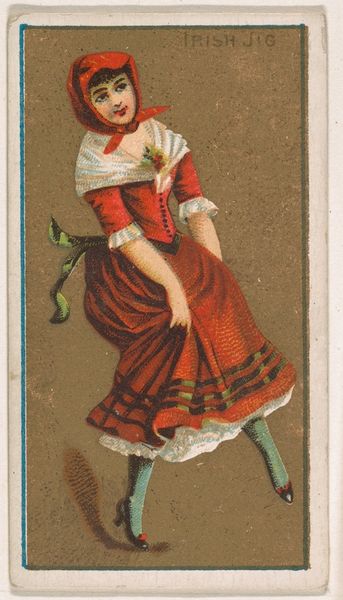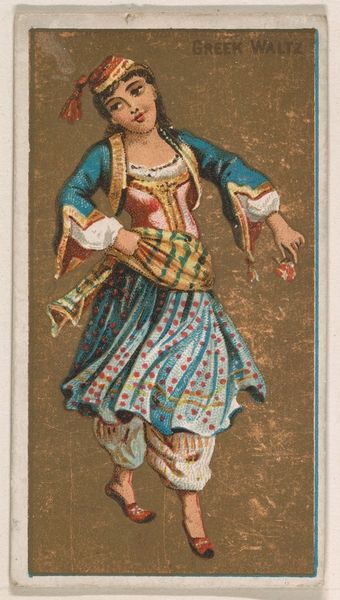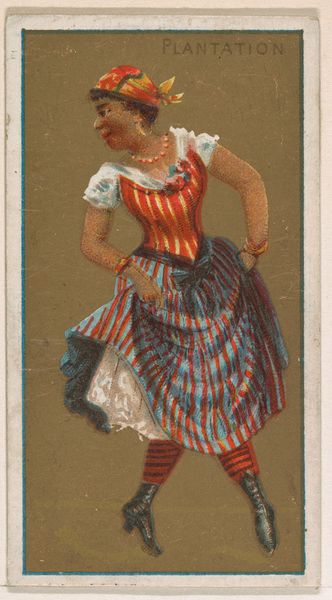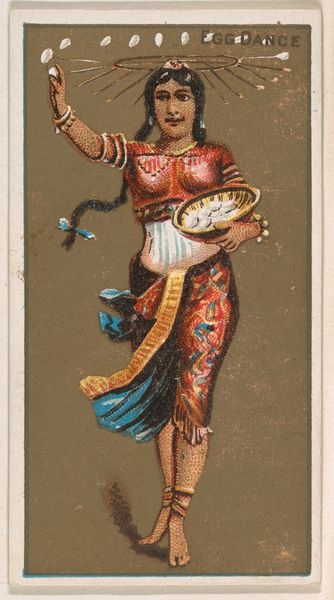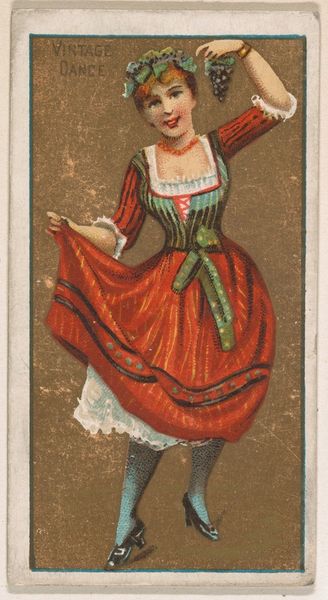
Madrilena, from National Dances (N225, Type 1) issued by Kinney Bros. 1889
0:00
0:00
Dimensions: Sheet: 2 3/4 × 1 1/2 in. (7 × 3.8 cm)
Copyright: Public Domain
Editor: This is "Madrilena, from National Dances," printed in 1889 by Kinney Brothers Tobacco Company. It appears to be a color print. The subject matter—a Spanish dancer—feels very theatrical and romantic to me. I'm curious, what cultural narratives do you see at play here? Curator: This image operates within a complex historical context. Tobacco cards like these, widely distributed, participated in the construction and dissemination of cultural stereotypes. Notice how "Spanishness" is distilled into readily consumable visual tropes: the ruffled dress, the dramatic pose, even the "Madrilena" title, which reduces Spanish identity to a regional stereotype of a woman from Madrid. What message do you think this image sent to consumers at the time? Editor: So it's not just an image of a dancer, it's also reinforcing particular ideas about Spain and Spanish women for an American audience. Was this common? Curator: Absolutely. Consider the era: mass media was on the rise, shaping public perception. These cards, tucked into tobacco packs, acted as a form of popular education. But this "education" was often laced with exoticism and oversimplification. They aimed to entertain, and thus often prioritized image over accuracy. The print simplifies an entire culture for the sake of entertainment. What effect might it have had on people's understanding of Spanish culture? Editor: It sounds like they were promoting an inaccurate picture for profit. Did anyone call them out on this? Curator: Yes and no. Some would have appreciated the ‘exotic’ image; others wouldn’t have had the ability or means to critically engage with the images. The power of these images lies in their mass distribution. Also, consider who was making these decisions: What institutions helped shape these visual languages and perpetuated them through collections? Editor: That’s given me a new perspective. I wouldn't have thought about the social context, but it seems key to understanding how these images shaped opinions and understanding of different cultures. Curator: Exactly! By looking at the political history and purpose of these cards, we can interpret beyond face value. We can think critically about not just what art is, but what it *does.*
Comments
No comments
Be the first to comment and join the conversation on the ultimate creative platform.
